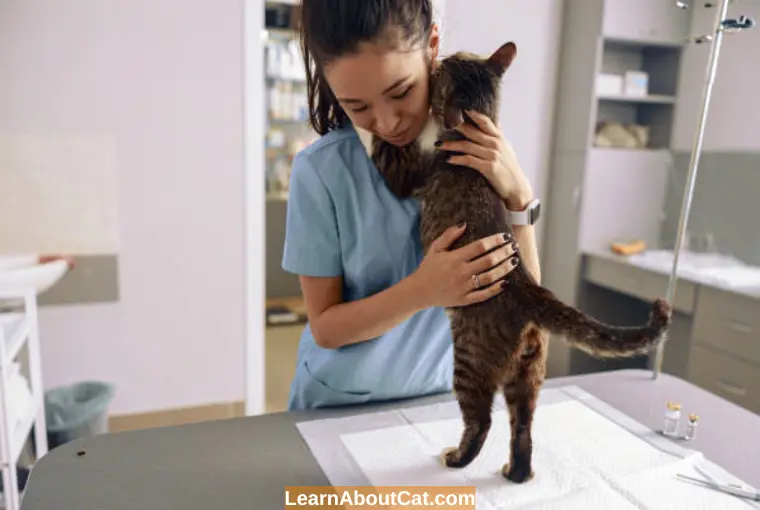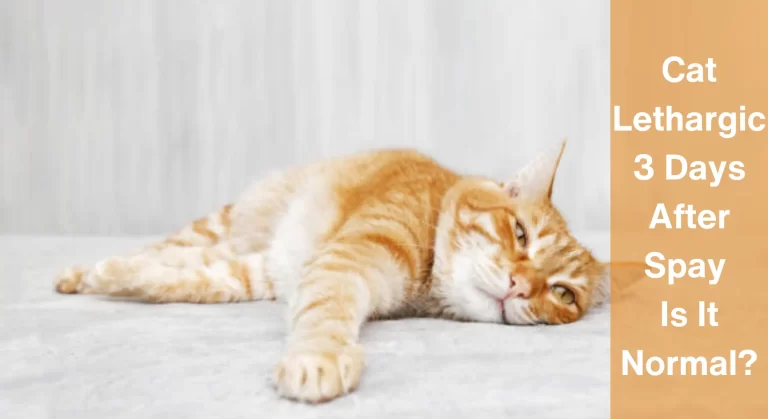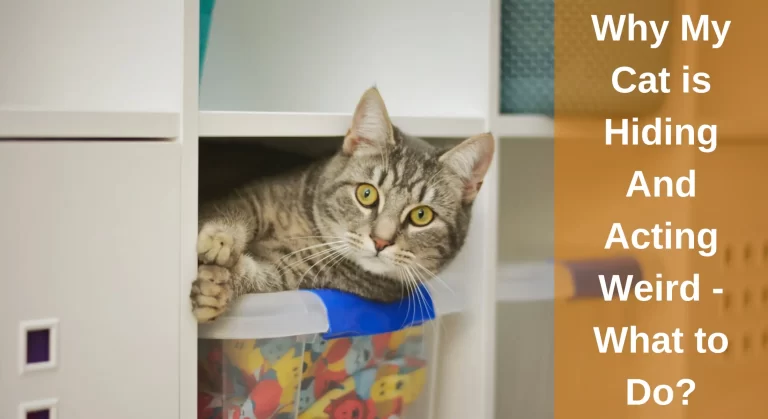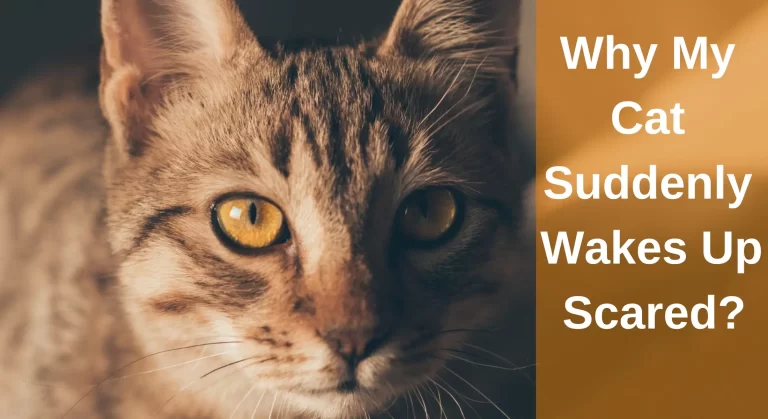How To Tell If A Cat Is Pregnant? Signs, Symptoms, All You Need To Know
Unspayed female cats have an extremely high likelihood of getting pregnant twice a year if they have access to male cats. You and your cat will experience lots of excitement and emotion when your cat has kittens. It is crucial that you know what a breeding programme entails from the moment of mating till giving birth” before you welcome a bundle of kittens into your home.
If you are wondering if your cat is pregnant, you can check for a few key symptoms during the gestation period. These signs include weight gain, increased appetite, more sleeping, a swollen abdomen, change in behaviour, vomiting, more sleeping and changes in the appearance of its nipples(pink nipples).
The experience may seem overwhelming, but we’re here to help. Here, you’ll find everything you need to know about anticipating cats during pregnancy and labour. To ensure you are prepared to support your pet during her pregnancy and labour, we have included all the information you need about expectant cats.

Cat Heat Cycle: Estrous Cycles An Overview
Before we can completely comprehend cat pregnancy, we must first comprehend what causes your cat to go into heat. When your cat becomes an adolescent, she will produce more oestrogen.
At around 6-7 months of age, queens come into heat or gain maturity and are capable of becoming pregnant. Your region and the prevailing temperature determine the frequency with which your cat goes into heat. Cats go through oestrous cycles every 2-3 weeks. Female cats attract male cats’ attention by posturing and vocalising excessively.
The majority of symptoms that your cat is in heat manifest themselves in your cat’s behaviour. Increased infection, rubbing against objects, and purring are all possible symptoms.
Other symptoms that your cat is in heat include:
- An increased level of affection.
- Consistently raising her rear.
- Wailing and vocalisation improved.
- Spraying is done on a regular basis.
- Purring and stroking against items in excess.
- Attempting to get out of the house (if indoors).
Interesting Reading: When Do Male Cats Go Into Heat?
How To Tell If A Cat Is Pregnant? Physical Signs of a Pregnant Cat
If your cat is still alive, it’s a wonderful moment as your family is expecting a fresh litter of kittens. Here are several easy ways to tell whether your cat is pregnant.

- Heat Cycle Change: Every 10 to 2 weeks, your cat will go through a heat cycle. Rolling on the floor is a common accompaniment.
- Nipples Size Increase: Your cat’s glands will grow in size during the last week of pregnancy. Her nipples were leaking copious cream-coloured fluids. Your cat may lick it off.
- Increased Appetite: Anxiety is often accompanied by a loss of appetite. Sometimes, their appetite gets increases as the kittens grow in size.
- Swollen Abdomen: Your cat will display physical indications of pregnancy halfway through her pregnancy. On overweight cats, this distortion may be more difficult to detect.
- Exceptional Weight Gain: Owners will commonly notice a two- to four-pound weight gain, especially later in the pregnancy.
- Behaviour Change; Nesting Behaviour Starts: Your cat may become isolated or excessively friendly during the last week of pregnancy. Like people, felines may begin nesting behaviour.
- Peeping: On a frequent basis, your cat may be licking her genitalia. Your cat’s wailing, meowing, or chirping are all sounds she will produce.
- Vomiting: Vomiting on a regular basis might indicate that she’s pregnant early on.
- Increased Sleeping: She will desire to sleep for extended lengths of time.
- Panting And Over-Grooming: These are common signs of a cat on the verge of giving birth. The over-grooming is done to remove the vaginal discharge that occurs prior to delivery.
- Temperature Will Drop: The usual temperature of your cat is between 37.7 degrees centigrade and 39.1 degrees centigrade. Her temperature will decrease to 37.2 degrees centigrade one to two days before she gives birth.
To be sure whether your cat is pregnant or not, an owner should consult a veterinarian.
Find Out: Can A Cat Get Pregnant While Nursing?
Clinical Diagnosis of Pregnancy in Cats
It might not be required to seek a veterinarian’s clinical diagnosis when your cat has already had regular medical treatment, and the prior indicators of pregnancy appear. But you should have your cat checked out by your physician to ensure she’s healthy.

1. Pregnancy Test
There are many pregnancy testing kits for felines that could identify particular hormones secreted in pregnancy, similar to the ones available for people. While often, you won’t require this type of test because your veterinary doctor can confirm the pregnancy using the aforementioned techniques.
A home pregnancy test seems to be an alternative if there is any doubt and the veterinary doctor is unavailable to perform an ultrasound or perhaps an x-ray. While in humans, pregnancy tests can be performed using urine specimens, the test for cats needs a sample of blood.
2. Palpation
During pregnancy, your veterinarian can palpate and gently press on your cat’s abdomen to feel her fetus. It usually occurs between the 17th and 25th days of pregnancy
3. Radiograph
Once a cat is much farther advanced in early pregnancy, your veterinarian can perform an X-ray on his belly to establish how many babies she is expecting. The mother and kittens won’t be harmed by this little dose of radiation. Approximately 42 days further into pregnancy, x-rays start to show the vertebrae and skulls of the kittens.
This procedure requires the veterinary doctor to consider the gestational stage while making the diagnosis. The professionals advise getting an X-ray after the initial third of pregnancy since fetuses are increasingly radiation sensitive as they get smaller. To determine the total number of fetuses, apply this method at the 5 completion of the pregnancy.
4. Ultrasound
By measuring the embryonic sac’s size, the ultrasound diagnostic provides an estimate of the period of gestation. The outcomes are also utilized to document how the organs have changed over time. It also helps to determine whether a fetus is healthy.
One of several safest but also most dependable procedures is ultrasound, which poses no dangers to the cat. It is advised to utilize mode B with 6 MHz or 8 MHz probes when working with little breeds. The cat must possess a full bladder just at the time the test is made using this procedure to increase accuracy.
If it turns out that your domestic or adopted cat is truly pregnant, you’ll need to make some important choices soon. If you want to spay her to terminate the pregnancy, then you must perform it as soon as you can. Or else, be ready to assist in providing for kittens’ needs and finding them all loving homes.
Also Read: Why Are Male Cats Around Pregnant Female Cats?
What Should I Do if My Cat is Pregnant?

1. Medications
Early on during the feline’s pregnancy, a medical examination should be conducted. Check her for parasites, lice, and mites and keep them off her. Ask the veterinary doctor to check a sample of the animal’s faeces for indications of parasites or any other parasitic infections. During pregnancy, medicine should be administered after consulting with your veterinarian since some drugs might be harmful to the health of the kittens.
2. Deworming
Before mating, cats intended for reproduction should screen clear for intestinal worms. If not, then they must be treated for hookworms (of all types) and roundworms at least once or twice before mating. The only safe component to utilize if the feline must be dewormed after two weeks of being pregnant is fenbendazole. Before becoming pregnant, your feline should be updated on all fleas and parasite treatments since ascarids and tapeworms can indeed be passed on to the offspring through the mother’s milk.
3. Feed a Healthy Diet
A diet for pregnant felines must accommodate both the nutrient requirement and the demands of their developing offspring. For advice on your cat’s food at this time, see your veterinary doctor. A pregnant feline should eat high-quality proper kitten food.
4. Make a Comfortable Birthing Space
Make sure your feline has a peaceful place to give birth before the delivery. Put a container or clothing in a dim light, quiet corner of your house that is lined with comfortable blankets. But remember that your feline could or might not choose to utilize the space you’ve provided for her.
Most owners prepare a birthing space in one section of their home, only for their feline to give birth to her babies in another location.
5. Your Feline in Labour
Most cats can give birth without much to no help. Yet, you should contact a veterinary doctor or the nearest veterinary emergency facility as soon as you observe if your feline is in terrible pain for over an hour without giving birth to kittens, exhibits bleeding, is acting in discomfort, or otherwise seems to be in trouble. Your cat could require immediate medical attention. The cat and baby should remain together after birth.
During the first several weeks of their life, avoid isolating them. Her breastfeeding will provide for the whole of their dietary requirements; therefore, she will be required to continue eating well to encourage milk production. Once the kittens seem to be 6 weeks old, make an appointment for them to see a veterinarian. The kittens’ first round of vaccines, and a medical inspection, will all take place at this point.
Interesting Reading: Do Cats Inbreed? Things Cat Owners Should Know
How to Prevent Cat Pregnancy?

1. Avoiding Males
This might be a natural technique for preventing pregnancy. It depends on the owners of a feline having a solid comprehension of the typical oestrus cycle. Male cats are quite skilled at getting close to queens who are currently in heat, although the queens occasionally wander at this time if they have the chance.
However, this ought to be a viable birth control technique if male and female cat owners are practising appropriate cat ownership. Cat owners who plan to breed through their queens in the future generally employ this technique of preventing pregnancy.
2. Spaying
This is probably the most popular birth control technique since it permanently ends the oestrus cycle and hence prevents conception. The ovary and uterus are permanently removed surgically in operation called an ovariohysterectomy. In certain nations, ovariectomy is not a very popular kind of surgical neutering. Under either scenario, ovarian removal halts the breeding cycle, making pregnancy impossible.
Although surgical spaying is a significant surgery, most veterinarians conduct it regularly, and the danger is minimal. Most spayed animals are healthy and young. Before puberty, the surgery can be effectively carried out.
3. By Using Chemical Drugs
Utilizing a variety of medications that resemble normal reproductive hormones is another method of birth control. The medications are given by injection or pill at certain frequencies, and it’s crucial to follow veterinarian instructions regarding the treatment plan. The medications can stop or reduce oestrus cycles, but most of them have adverse effects that should be addressed with your veterinarian.
Like humans, this technique is not typically seen as ideal for continuous, lengthy birth control in companion cats due to the inherent hazards. Only cats who, for any cause, cannot undergo traditional surgical spaying may utilize it as a temporary solution or a permanent one.
Cat Pregnancy Timeline: Signs And Stages
Cats go through five phases of pregnancy, each with its own set of signs that might help you figure out when your cat is about to give birth.

1. The First Step Is Fertilisation
Normally kittens attain maturity after 6 months of growing; however, it might take up to 12 months for some. When your kitty reaches sexual maturity, she will begin to experience heat cycles and may get pregnant.
2. Second Stage Accomplished By Physiological Changes
After fertilisation, pregnant female cats will go through a 4-week early-stage pregnancy phase. During this period, your cat loses weight and lacks appetite due to nausea, and your cat may feel the sickness in the morning. Cats grow pink, puffy, and sensitive nipples in the second week.
As the kittens develop, you may notice lumps in your cat’s abdomen around the third week. Between 3 and 4 weeks following conception, a veterinarian may be able to identify the kittens via ultrasonography or stomach palpitation.
3. The Intermediate Stage
Your cat will begin to gain weight when she has passed through the early stages of pregnancy. An abdomen x-ray will reveal the presence of kittens and the number of them.
4. Labour Preparation
This is when your cat will begin hunting for warm locations to give birth, often known as the nesting period. Pre-labor normally begins one week before birth, and there are various symptoms to look for e.g. milk lowers in the breast region, loss of appetite, and a reduction in rectal temperature.
5. Labour
This is the last stage of a female cat’s pregnancy. It’s distinguished by the cat licking her abdomen and genitals, which stimulates birth.
Click For More: Do Human Pregnancy Tests Work on Cats?
Issues That Could Emerge During Kitten Birth
Difficult delivery is a possibility. If you see any of the following, you should seek veterinary help:

- The queen feels sad, drowsy, or has a fever (rectal temperature more than 103°F or 39.4°C).
- Bad smell coming out from the vaginal area.
- Placentas have not been exuded.
- The queen feels pain when she gently pulls on a stuck foetus.
- A kitten is not born after twenty minutes of severe labour.
- The queen spills fresh blood from the vulva for more than ten minutes.
- A kitten that can be seen on the queen’s vulva will not be expelled after 10 minutes of severe labour.
Complications
- Milk Fever: It is a life-threatening condition caused by a calcium deficiency in the bloodstream and can occur during the later stages of pregnancy. For high-risk cats, a calcium supplement can help prevent this condition. Supplements should be introduced after consulting with your veterinarian.
- Inflammation of the Mammary Gland: Often called mastitis, when the mammary glands of a nursing queen become irritated, obstructed, or infected. As a result, a single or group of glands may be affected.
- Miscarriage: A stillborn kitten might cause dystocia if it disrupts labour, yet, the dead kitten can also be born properly.
Frequently Asked Questions
How long does Cat labour last?
You should expect the first stage of labour to last up to 36 hours if this is your cat’s first pregnancy. You’ll notice all of the pre-labour symptoms here, such as a decrease in appetite and a dip in temperature. Keep an eye on your cat so you’re prepared when she moves on to the next stage.
How long are cats pregnant? The gestation period for cats
The average cat pregnancy lasts 63 to 67 days; however, establishing how long a cat is pregnant may be tricky. The gestation cycle of a cat can last anywhere between 61 and 72 days. Your cat (queen) might not show any indications of pregnancy until she’s many months along.
How do I know how many kittens My cat is pregnant with?
By the 40th day of your cat’s pregnancy, your veterinarian may be able to tell you how many children she’s carrying.
How to tell if your cat is in labour?
Several hours before birth begins, your cat might be licking her genitalia frequently. Her vulva will discharge, and her water will break. During this time, your cat will be pacing, restless, howling, meowing, or chirping a lot.
How should new kittens be cared for?
Make a cosy nest at home with a heating pad that is entirely wrapped in a blanket or towel. Ascertain that kittens may escape the heat if they so want. Replace the bedding on a daily basis or if they have an accident. If a kitten gets wet, she might get irritable; therefore, never submerge a cat in water.
Can cats sense their own pregnancy?
Yes, cats have a highly developed and sophisticated sense of smell. Hormonal changes occur in pregnant cats that cause the body to produce increasingly high amounts of progesterone and estrogen, which can affect the smell of their bodies.
What age can cats get pregnant?
Cats can become sexually mature and give birth in as little as four months. Cats only start their breeding cycle at specific times of the year.
Can I give my cat a human pregnancy test?
Your cat won’t urinate on the pregnancy test strip. Relaxin is a hormone detected in a pregnant cat’s blood, while human urine is used as a sample for pregnancy tests. Hence pregnancy in cats cannot be detected by a normal human pregnancy testing kit.
Wrap Up!
It is your obligation to properly care for your cat and her growing kittens if she becomes pregnant. Consult your veterinarian about your cat’s changing nutritional requirements and, if necessary, make dietary modifications to ensure she gets the calories and minerals she needs.
Related Posts:
Who is Isabella?
My name is Isabella, and I am a dedicated and knowledgeable cat enthusiast. With years of experience caring for cats and a deep love for felines, I made a mission to help other cat lovers navigate the challenges of cat ownership.






